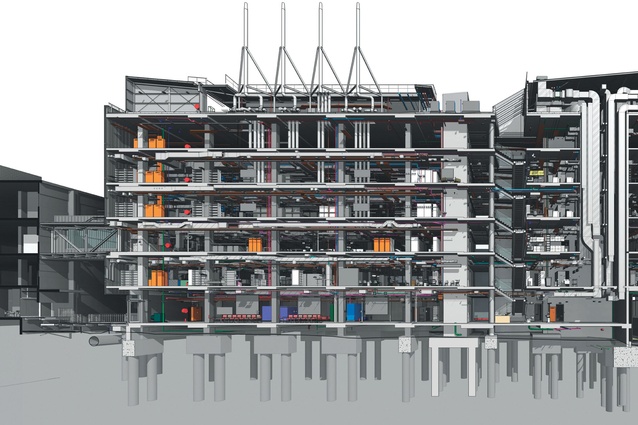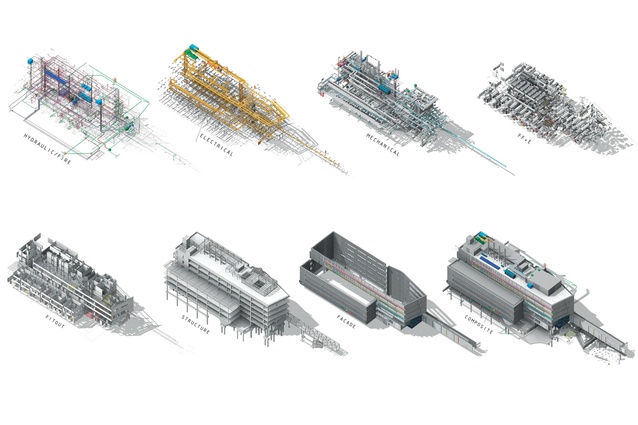A place for BIM
Smartphone technology is intimately woven through our lives. Once just for calls and texts, these now augmented devices enhance our lives, enabling us to check the weather, the traffic, pre-order our coffees, board a plane and pay the bills.

Applications, or apps as we know them, fulfil our personal needs in a way that 10 years ago we didn’t imagine would be possible. On that logic, then, it’s predictable that once the construction industry understands the true potential of Building Information Modelling (BIM), it will look back and wonder just how it survived without it.
Fundamental change is required to reduce waste and increase productivity and affordability in New Zealand’s construction sector. Research from AECOM’s annual Blue Book suggests the local construction sector is working within an environment of shifting demographics and limited public funding, and that it must adopt new ways of working to address cost escalation and improve the viability of major infrastructure projects. According to this research, success within these shifts is dependent on the leveraging of, in part, the integration of new technologies such as BIM.
Drafting has evolved over the years, from putting pencil to paper to draw lines representing a two dimensional object, to the use of CAD, the computerisation of the same process. The introduction of three-dimensional CAD allowed designers to create objects in three dimensions, which enabled greater visualisation and understanding of complex geometry. BIM goes one step further, allowing designers to place objects that encompass a wealth of data, from geometric information to location information and finishes. The key technological advance is that BIM allows the leveraging and reuse of structured data throughout the lifecycle of an asset.
BIM exploits the potential in computer-based modelling technologies to create, manage and share structured data about an asset throughout its lifecycle, from inception to refurbishment or demolition. It provides a significant step-change in the ability of design and construction teams to structure and exchange information around shared three dimensional models of a project. This can bring numerous benefits, including improved design coordination, reductions and certainty in design costs, and improved communication throughout the design and construction process.
These data-rich three dimensional models developed by the different design and construction disciplines can simulate projects before they are built. Designs can be developed and tested virtually so performance and cost are optimised.
They can be coordinated so potential problems are either designed out or avoided altogether. Ultimately, the benefits are not only in more efficient and effective design and construction processes, but in better and more certain project outcomes – improved assets that are more fit-for-purpose and meet their brief requirements and design intent. BIM is fundamentally a single source of truth - ensuring clarity, certainty and transparency.
Building information models can link or embed key product or asset data including manufacturer’s product manuals, service information and warranties. This centralises facility/asset information and promotes the effective management of information throughout an asset’s lifecycle.
BIM is the conduit for information provided during design and construction. The structured data captured during these phases can then be used to populate fields in asset management systems. Therefore, upon completion of a project, an ‘as built model’ can be handed over to the facility owner who can use the data to improve ongoing management. An educated facility owner will ensure this model becomes ‘living as built.’
The United Kingdom is almost one year away from a key milestone to implement BIM on all government projects, yet there is no similar target in New Zealand. The use of BIM in the UK 2025 Construction Strategy aims to help deliver four key objectives: to reduce the whole-of-life cost of an asset by 33 per cent, to reduce the cost of project delivery by 50 per cent, to reduce carbon in the industry by 20 per cent, and to increase construction exports by 50 per cent. Last year, with the increasing uptake of BIM, the UK Government reported a saving of £840 million, which was independently verified by the office for national statistics. Its target for 2014 is a saving of £1.2 billion.
Meanwhile, through the Productivity Partnership, New Zealand is accelerating the adoption of BIM and has published an industry handbook. We’re moving in the right direction; we’re just not moving fast enough.
The acronym itself has been touted around the industry by design professionals for over seven years, but the penetration of BIM in the market is varied. With around $40 billion to be spent on the Christchurch rebuild, the re-elected National Government has a responsibility to move the New Zealand construction industry towards a more productive footing. The nature of supply and demand will mean failure to do so could result in cost escalation across all aspects of project delivery, something that is clearly visible in Christchurch with private developers yet to truly invest in rebuilding the city.
Data is the asset of the 21st century; BIM will unlock the potential of ‘Big Data’ for the design and construction industry, and like the apps we base our daily routines on, BIM will soon become ‘business as usual.’











